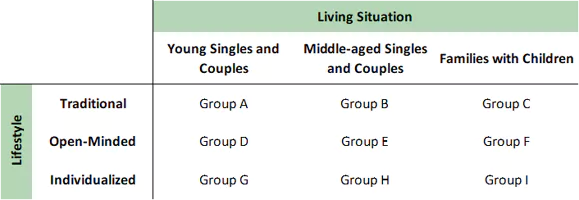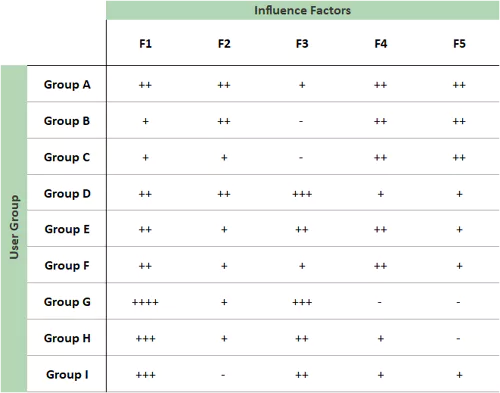Background
 Centrality
Centrality
(F1) Travel time to the next centre with nationwide significance.
(F2) Travel time to the next centre with regionwide significance by street transportation.
(F3) Travel time to the next centre with regionwide significance with public transportation.
 Location Quality
Location Quality
(F4) Tranquility of a place
 Unemployment Rate
Unemployment Rate
(F5) The image of a municipality, measured by the share of unemployed inhabitants.
As the horizontal segregation of living space qualities is examined
in this work, a choice on user groups had to be made. Those user
groups must be defined with their respective weights for each
factor. Both definitions were taken and adapted from Fahrländer
Partner. The user groups consist of a combination of the living
situation and the lifestyle. In the table below all groups and their
weights for each factor are shown.
 User groups according to Fahrländer Partner, that were also used
for the implementation of the maps in this project.
User groups according to Fahrländer Partner, that were also used
for the implementation of the maps in this project.
 User groups according to Fahrländer Partner, that were also used
for the implementation of the maps in this project.
User groups according to Fahrländer Partner, that were also used
for the implementation of the maps in this project.
 Weights per user group and influence factor used in this
implementation.
Adapted from Fahrländer Partner.
Weights per user group and influence factor used in this
implementation.
Adapted from Fahrländer Partner.
